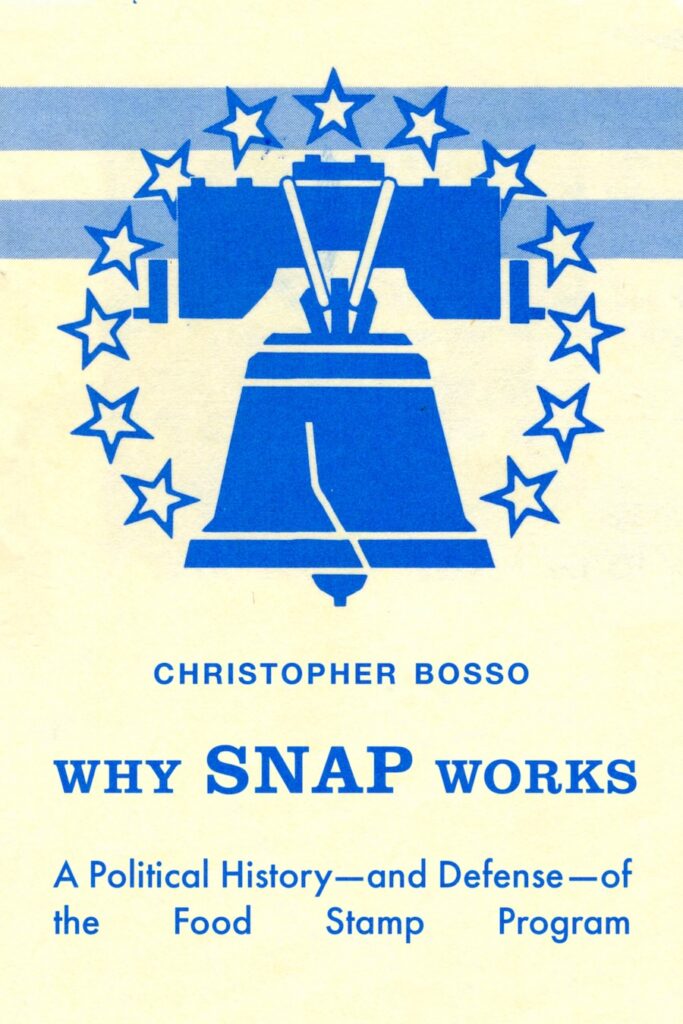
By Christopher Bosso
University of California Press, 2023
280 pages, hardcover, $24.95
With the deadline of 2023 Farm Bill extended and set to be renewed this year, SNAP, or Supplemental Nutrition Assistance Program, is once again up for federal debate. But to the average American, the placement of one of our country’s largest social welfare programs in the United States Department of Agriculture (USDA), and its intrinsic connection to farming, may be less than clear.
In “Why SNAP Works,” Christopher Bosso outlines the almost century-long history of the SNAP program, including its agricultural roots, and makes a case for its continued importance. Originally known as the Food Stamp Plan, the program’s inception was not a direct response to hunger but a reaction to agricultural surplus. In the 1930s, decreased food spending due to the Great Depression and continued technological advances created a pork surplus, leading the government to create a “slaughter and disposal campaign.” The optics of this were a problem for the USDA: newspaper articles wrote about piles of dead pigs while many families went without meat on their table. The response was our country’s first food stamp program: Users could purchase orange stamps, redeemable on domestic food and select household products, and receive additional discounted blue stamps to spend on noted agricultural surpluses. Throughout the program’s many iterations, debate often stemmed from Republicans from rural farming states arguing commodity pricing and Democrats representing urban populations advocating larger social safety nets. At the heart of the relationship between farming interests and supplemental nutrition, coined an “unhappy marriage” by Bosso, is the American story of “want amongst plenty.” But while the debate between rural and urban interests takes place in the Legislature, the truth remains that SNAP is an essential program for all Americans, regardless of zip code.
As the subtitle states, this book is first and foremost “a political history.” The story Bosso weaves in the first five chapters is set in the halls of Congress and the chambers of the Senate; while there are references to farms and welfare lines, this book is about policymakers. Singular in focus, the average political layperson may find themselves struggling to fill in the historical context outside of the SNAP program. But for political enthusiasts looking for a comprehensive and definitive history of SNAP, this book is it.
The final chapter of the book is Bosso’s argument for continued support of SNAP. The program is shaped by, and works in, our current political system. Yet praise of the program felt stifled by the givens of our country’s gridlocked two-party system. Practical as this may be, I wanted more voices from outside of federal politics, primarily from users of the program and facilitators on the state level. For example, many states, like Maine, organize programs where SNAP users can gain additional benefits if purchasing food at local farmers’ markets. Could the marriage between farming and welfare interests be a happier one? But Bosso’s main point cannot be discounted, SNAP works within the system as it currently operates and is vital for Americans.
– Clare Boland, Portland, Maine
This review was originally published in the summer 2024 issue of The Maine Organic Farmer & Gardener. Browse the archives for free content on organic agriculture and sustainable living practices.
